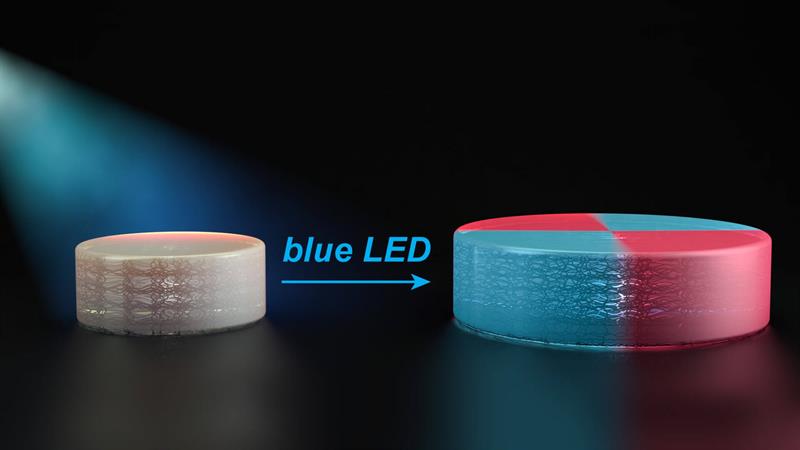That could all be about to change thanks to researchers at MIT in the US. Scientists there have developed a technique that allows them to print objects and then go back to add new polymers that alter the materials’ chemical composition and mechanical properties. The researchers can also fuse two or more printed objects together to form more complex structures.
Jeremiah Johnson, a Professor of Chemistry at MIT, says: “The idea is that you could print a material and subsequently take that material and, using light, morph the material into something else, or grow the material further.”
Living polymerisation
One of the most common techniques used for 3D printing is stereolithography. By shining UV light on to a liquid solution of monomers, the building blocks of plastic and other materials, stereolithography devices can form layers of solid polymers until the final shape is completed.
Several years ago, Professor Johnson and his colleagues set out to create adaptable 3D printed structures by taking advantage of a technique known as ‘living polymerisation’, which can halt the growth of materials, and then restart them later.
In 2013, after printing an object, the researchers used ultraviolet light to break apart the polymers at certain points, creating very reactive
molecules called free radicals. These radicals then bind to new monomers from a solution surrounding the object, incorporating them into the original material.
“The advantage here is you can turn the light on and the chains grow, and you turn the light off and they stop,” says Professor Johnson. “In principle, you can repeat that indefinitely and they can continue growing and growing.”

Morphing time: Each of the new polymers are activated by an organic catalyst that is turned on by LED light.
However, this approach proved to be too damaging to the material and difficult to control as free radicals are so reactive. To combat the affect, the researchers designed new polymers that also react to light, but in a more controllable way.
Each of the new polymers contain chemical groups that fold-up like an accordion. These chemical groups, known as trithiocarbonate iniferters (TTCs), can be activated by organic catalysts that are turned on by light. When blue light from an LED shines on the catalyst, it attaches new monomers to the TTCs, making them stretch out. As these monomers are incorporated uniformly throughout the structure, they give the material new properties.
“That’s the breakthrough,” says Professor Johnson. “We really have a truly living method where we can take macroscopic materials and grow them in the way we want to.”
The researchers have demonstrated they can incorporate monomers that alter a material’s mechanical properties, such as stiffness, and its chemical properties, including hydrophobicity (affinity for water). They have also shown that they could make materials swell and contract in response to temperature by adding a certain type of monomer.
The researchers also used this approach to fuse two structures together, by shining light on the regions where they come in contact with each other.
One limitation of this technique is that the organic catalyst requires an oxygen-free environment. The researchers are now testing some other catalysts that have been reported to catalyse similar polymerisations but can be used in the presence of oxygen.





